

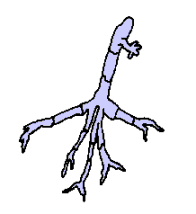 Mr. Fungus is ready to greet our friend the alga | 
Friend alga cell is prepared to greet Mr. Fungus. |
 The Lichen is created between the fungus and the alga. |
|
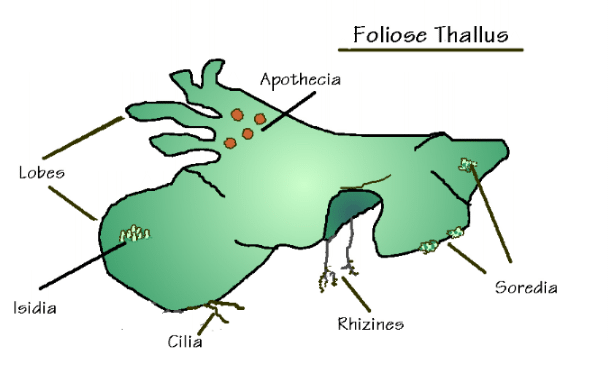 |
|
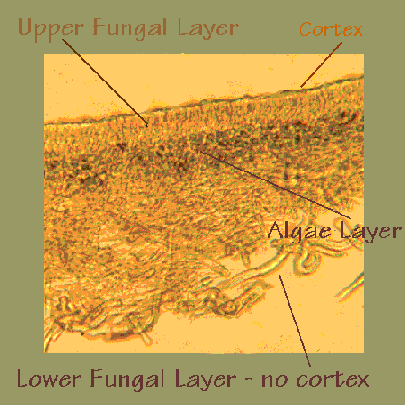 |
Many lichens are very sensitive to pollution in the air. When there are too many harmful things in the air, lichens die. If you live where there are many lichens it probably means the air is clean. But, if there are only a few lichens in your neighborhood, the air you are breathing is probably clogged with automobile fumes or industrial wastes.
For additional information about lichens and air pollution monitoring, see the following pages
Lichens are important in many ways in the habitat. Some make the nitrogen in the air usable to plants, They are homes for spiders, mites, lice, and other insects. All are important in the nutrient cycle
in the places where they grow.
Humans have learned to use lichens in many useful ways. People eat lichens (careful a few are poisonous, so don't experiement without adult help). Drug companies make antibiotics from lichen substances. Lichens can also tell us if the air is clear and clean because many lichens die when the air gets polluted. One of the most creative things people do with lichens is make dyes to color wool. Below are some examples of wools dyed with lichens. Some colors are very subtle, while others are bright and cheerful.
 These pieces of wool were dyed with lichens. The white one is undyed wool so you can see the change in color. |
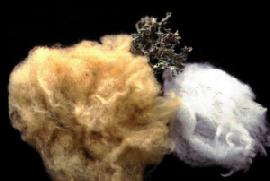 This wool was dyed with Evernia prunastri in a boiling water bath with ammonia added, then soaked for 10 days. |
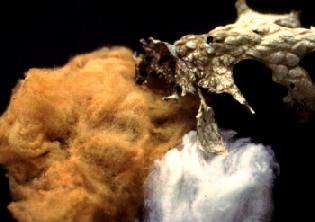 Lobaria pulmonaria in boiling water bath produced a dye bath that gives this golden color to wool. |
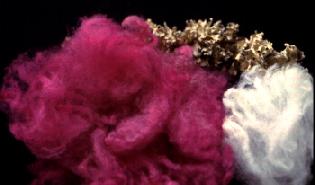 A long soak in water containing a Parmotrema species made this wool a pretty violet |
| Lichens grow very slowly, sometimes only fractions of an inch in a whole year, and many do not recover well from disturbance or collecting. If you collect for crafts or research, Please be sure the species you collect is not endangered. Check with local botanists, land managers, or government authorities for information about the status of species in your area. We all enjoy lichens in their natural setting, so if you collect please leave large patches of undisturbed lichens! | |
To try out a query and lichen secrets & photographs.
Return to Front Page